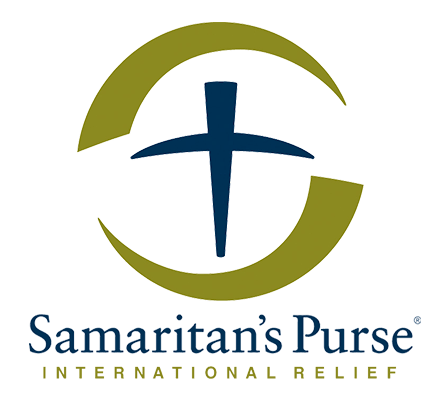this that this that
Brand Archetypes
The Caregiver
The good samaritan archetype is all about taking care of others, providing support, and offering generosity through selflessness.
What is the Caregiver Brand Archetype?
The Caregiver is the archetype that gives. This is the brand that serves first, and nurtures.
Driven by Compassion, Defined by Service
Caregiver brands are driven by the conviction that their purpose is to protect, support, and improve lives, especially the most vulnerable. They see the world as full of people who need help, comfort, and safety, and themselves as uniquely positioned to provide it. And they're not helping for marketing points—they're doing it because care matters. Because protection matters. Because service demands it. The vulnerable need defending.
What are some Caregiver brand examples?
- Huggies
- Habitat for Humanity
- Volvo
- Samaritan's Purse
- Birkenstock
- Kiehl's
The Psychology of The Caregiver Brand Archetype
Map this to the Enneagram and you get Type 2: The Helper. The deep need to be needed, to provide care, and to make others' lives better, not through grand gestures but through consistent, reliable support.
Caregivers are fueled by empathy, responsibility, and the desire to protect those who can't protect themselves. They believe that a society is judged by how it treats its most vulnerable, that comfort and safety are human rights, and that brands have both the ability and obligation to help. They ask: "Who's looking out for the people who can't look out for themselves?" So they protect. They comfort. They never stop caring.
This is why Volvo makes cars, sure, but they've made safety their entire identity for decades. Every innovation, every design decision, every ad campaign reinforces one message: we exist to protect you and everyone around you. Three-point seatbelts, side-impact protection, child safety seats: Volvo invented them and gave them to the world. Similarly, Habitat for Humanity builds dignity, stability, and futures for families who need safe, affordable housing. Every nail driven is an act of care.
The Caregiver Brand's Promise
Every Caregiver brand makes the same core promise: "We'll take care of you," which is selling safety and comfort. That is, the protection, support, and peace of mind you need to feel secure and cared for.
Look at Huggies. They didn't become a diaper brand giant by talking about absorbency specs. They became it by positioning themselves as partners with parents in caring for babies. "No Baby Unhugged" campaigns, maternity ward partnerships, parenting resources, Huggies understands they're supporting the sacred work of caring for helpless humans. Parents need a partner who understands the stakes.
Or consider Samaritan's Purse, a humanitarian organization that responds to crisis with immediate, practical care: medical aid, disaster relief, clean water, emergency shelter. Their Operation Christmas Child program delivers gift boxes to children in poverty, not because it's efficient charity, but because every child deserves to feel cared about. They position themselves as the hands and feet of compassion in a world full of suffering.
The Caregiver Brand's Core Values
Protection as Purpose: Caregivers exist to keep people safe. Volvo's entire brand is built on pioneering safety technology, they invented the three-point seatbelt in 1959 and made the patent public because saving lives mattered more than profit. Every Volvo ad reinforces safety: this car is designed to protect what matters most. They're selling survival.
Selfless Service: Caregivers put others' needs first. Habitat for Humanity mobilizes volunteers to build homes for families in need, with homeowners contributing sweat equity. It's a partnership that creates dignity. Samaritan's Purse deploys to disaster zones not for recognition but because people need help. Service is the mission, not a means to profit.
Comfort and Nurture: Caregivers provide more than function, they provide emotional care. Huggies creates products that comfort babies and ease parents' minds. Birkenstock creates footbeds that support your body and promote long-term foot health. Caregiving includes physical comfort that shows someone thought about your wellbeing.
Reliability and Trust: Caregivers must be dependable because people rely on them in vulnerable moments. Kiehl's has been making skincare since 1851, maintaining formulas that work and building trust through consistency. Volvo's reputation for safety is built on decades of delivering on that promise. You can't be a Caregiver brand if you're unreliable. Care requires showing up, every time.
Empathy in Action: Caregivers don't just feel bad about problems—they do something about them. Habitat for Humanity builds solutions, one house at a time. Samaritan's Purse deploys medical teams and relief supplies. Empathy without action is only just sentiment.
What are the Caregiver Brand's Sub-Archetypes?
While all Caregivers share core values, they express them differently. Understanding these nuances helps brands fine-tune their positioning and messaging.
The Protector
Safety-focused and vigilant, the Protector guards against harm. Volvo embodies the Protector perfectly. Their entire brand promise is keeping you and your loved ones alive. Every safety innovation, every structural decision, every feature exists to protect. The Protector's potential pitfall can be becoming so risk-averse that innovation stalls, or fear-based messaging that creates anxiety rather than reassurance.
The Nurturer
Comfort-focused and supportive, the Nurturer provides emotional and physical care. Huggies operates as the Nurturer, supporting parents in caring for babies, providing products that comfort children, creating resources that help families. Kiehl's also lives here, creating skincare that's gentle and caring. The risk? Nurturing that becomes smothering, or infantilizing people rather than empowering them.
The Helper
Action-oriented and practical, the Helper rolls up sleeves and does what needs doing. Habitat for Humanity embodies the Helper, they don't theorize about housing policy; they literally build houses. They show up with hammers and do the work. The trap can be helping that creates dependency rather than empowerment, or fixing symptoms without addressing root causes.
The Champion
Advocate-focused and justice-driven, the Champion fights for those who can't fight for themselves. Samaritan's Purse operates with Champion energy deploying to crisis zones, advocating for the vulnerable, providing care to people the world has forgotten. The danger lies in championing becoming self-righteous, or advocacy becoming more about the advocate than the cause.
The Healer
Restoration-focused and therapeutic, the Healer makes things better, makes pain go away. Kiehl's approaches skincare as healing—products that repair, soothe, and restore skin health. Birkenstock's footbeds don't just support; they're designed with orthopedic principles to heal foot problems over time. The pitfall? Promising healing you can't deliver, or medical claims that cross legal lines.
Building an Authentic Caregiver Brand
Your Care Must Be Real: Don't fake compassion for marketing points. Habitat for Humanity actually does build houses. It's their actual work. Samaritan's Purse actually deploys to disasters. Volvo actually prioritizes safety over profit by sharing their safety innovations. If your caregiving is performative rather than genuine, customers will sense the manipulation.
Put People Before Profit: Caregivers who prioritize margin over mission aren't Caregivers. Volvo released the three-point seatbelt patent publicly, losing potential profit to save lives. Habitat for Humanity operates as nonprofit, mobilizing volunteers. Kiehl's maintains formulas that work even when fancier ingredients would command higher prices. Care can't be secondary to quarterly earnings.
Build Trust Through Consistency: Caregiving requires showing up reliably. Volvo has been "the safe car" for 70+ years. Kiehl's formulas remain effective across generations. Huggies is there for millions of diaper changes. You can't be a Caregiver brand if you're inconsistent. People in vulnerable moments need to know you'll deliver.
Empower, Don't Create Dependency: The best caregiving helps people care for themselves. Habitat for Humanity requires sweat equity from homeowners, because they're not just "giving houses away," they're creating partners in building better lives. Birkenstock's footbeds are designed to support natural foot function. Care that creates helplessness is control, not caregiving.
Measure Success in Lives Improved: Caregiver brands need different metrics. Habitat measures in families housed, lives stabilized, communities strengthened. Samaritan's Purse measures in disaster victims helped, medical treatments provided, lives saved. Volvo measures in accidents survived, injuries prevented. ROI matters, but impact matters more.
Accept the Responsibility: Caregivers can't betray trust. If Volvo made unsafe cars, their brand would be destroyed because safety is their entire promise. If Habitat built shoddy houses, they'd lose moral authority. If Huggies products harmed babies, they'd be finished. Caregivers carry enormous responsibility because people's wellbeing depends on them keeping promises.
The Caregiver archetype endures because it speaks to something fundamental: the human need to be protected, supported, and cared for—especially in vulnerable moments. In a culture increasingly focused on individual achievement and self-reliance, Caregiver brands remind us that we all need help sometimes, and that there's profound dignity in both giving and receiving care.
They remind us that profit without purpose is empty. That the vulnerable deserve protection. That comfort and safety are not luxuries but necessities. And that the brands we trust most deeply are often the ones that showed up when we needed them most.
The Caregiver Connection Strategy
Care for the greater good is worth the sacrifice for the Caregiver. They crave helping others, and fear only one thing: ingratitude. Avoid conflict by allowing the Caregiver to thrive in their world of generosity, giving-back (think TOMS “One for One” campaign), and service-oriented business.
The Caregiver Brand Voice
Caring
Warm
Reassuring
The Caregiver Brand Colors

The Caregiver Brand Examples
![]()




